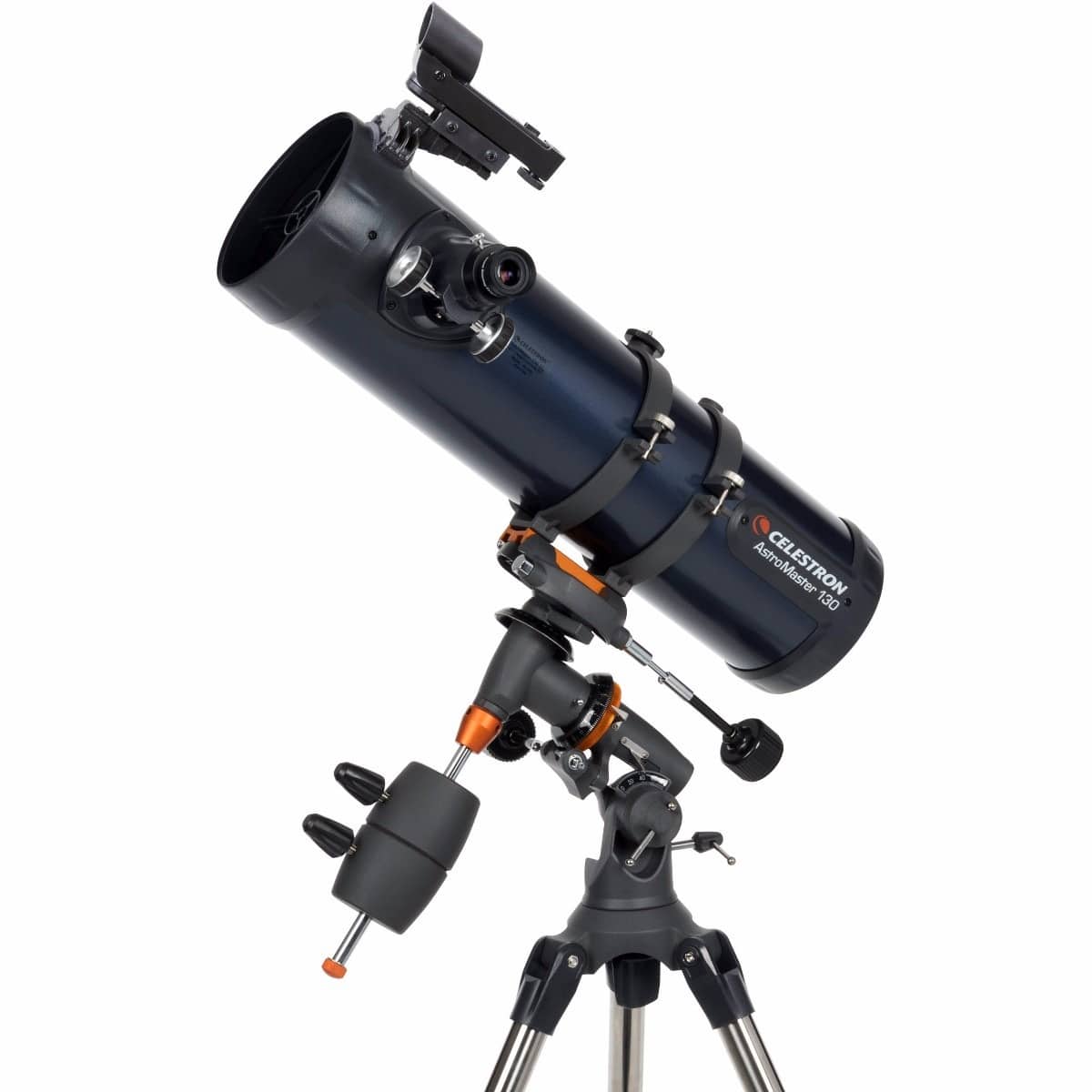For most people, stargazing is a fairly expensive hobby. In this article, we will try to debunk that myth, by showing that looking at the stars can not only be fun but also affordable. Are you thinking about buying a telescope but you are not willing to pay top dollars just to bask in the glory of the universe?
Then here are some reasons the Celestron AstroMaster 114EQ should be the top pick on your shopping list:
Newtonian Reflectors Are the Best
First, let’s talk about telescope basics. As you have probably learned in physics class, a telescope is an instrument used to observe distant objects like stars, planets, comets, and more. The device ‘collects’ electromagnetic radiation (light) using special lenses. Telescopes can be used for terrestrial observations as well, like looking at the peak of a mountain.
There are several types of telescopes on the market:
• Newtonian reflectors also called Newtonian telescopes are a sub-type of reflecting telescopes,
which harvest the imaging power of a multi-mirror arrangement, that are very popular among
beginners.
• Refracting telescopes or refractors, which use lenses to form an image.
• Catadioptric telescopes (quite a tongue-twister, isn’t it?), which use a mix of lenses and mirrors
to form an image.
So, why should I even consider buying a Newtonian reflector like the Celestron AstroMaster 114EQ?
Well, because at around $170, it is cheaper than most of the stuff you are going find. Moreover, a Newtonian reflector has certain advantages over a refracting or catadioptric telescope.
For instance, reflectors have a short focal ratio, which means that you’ll have a larger field of view during a stargazing session. Another advantage of Newtonian reflectors is the absence of chromatic aberration (an optical phenomenon that results in the telescope not being able to focus all the colors).
Last but not least, Newtonian reflectors are easier to set up and use: open the box, put the telescope on the tripod, and you’re ready to go. Not yet convinced? Then let’s talk some more about the star of our little gig – the Celestron AstroMaster 114Q.
I’m New to Telescopes. What Should I Do After Unboxing It?
The problem with most telescopes is that they’re tricky to set up. In 9 out of 10 cases, users will ditch the manual and probably search on YouTube or the manufacturer’s website a set of step-by-step instructions. And that can be a bummer, especially if you’re in the middle of nowhere, eyeing a couple of constellations.

The Celestron AstroMaster 114Q might be what you call an inadequate stargazing tool (pardon our
French!) for more experienced users. Still, for beginners, it’s a great start and a very robust telescope, considering its price tag. Now, the trickiest part of setting up your 114EQ (we’ll get to “EQ” later) is using the red dot finder to calibrate it instead of simply mounting it on a tripod. However, with a little bit of luck, and after reading through the manual, you’ll be able to set up your Celestron AstroMaster in no time.
If you’re at a loss, be sure to check this AstroMaster 114EQ review to learn more on how to properly collimate it. The best thing about Celestron’s eyepiece is the First light Edition SkyX software.
You’re probably wondering about how the software can be of any help. Well, after unboxing your telescope, you’ll notice a small remote control that is connected to the tripod.
That remote control is actually the telescope’s computer. With it, you’ll be able to find virtually any sky object, provided that it is in its database. Don’t worry too much about that because Celestron regularly rolls out updates. The last time we’ve checked, there were around 10,000 objects in the database.
And now, let’s talk shop. We should definitely start off with the specifications. So, Celestron’s AstroMaster 114EQ’s kit consists of three parts:
– the optical tube;
– the mount;
– the tripod.
The Optical Tube
The optical tube is made of aluminum, which makes it lightweight. The tube contains several aluminum-coated reflective mirrors and a secondary mirror obstruction. AstroMaster 114EQ has a 1000mm focal length and an f/8.8 focal ratio (focal ratios between f/6 and f/10 are ideal for viewing planets and binary stars).
The Mount
114EQ’s mount is a manual German equatorial, i.e. an entry-level mount that allows you to track even the fast-moving objects by rotating the telescope on a single axis. It is outfitted with slow-motion cables perfect for image stabilization and a removable counterweight.
The tripod AstroMaster 114EQ’s tripod is made of steel, which is great for stability. The tripod’s legs have small spikes to help you set up the telescope faster on uneven terrain.
Celestron’s telescope is a good long-term investment and ideal for learning the basics of astronomy and telescope optics. The pack comes with two types of eyepieces – a 10mm with a 100X magnification factor piece and a 20mm (50x magnification) one.
Conclusion
And so, we’ve arrived at the end of our article. Before we head out, let’s sum up the reasons Celestron’s AstroMaster 114EQ is the best choice for a beginner.
1. It is cheap in comparison to other telescopes in the same category.
2. The 114EQ comes with a learning curve (you can pick up a few tricks while using it).
3. Most importantly, it is not as daunting to set up as other telescopes, meaning that it is a kind of ‘ready out of the box’ instrument.















My relatives all the time say that I am wasting my time here
at net, however I know I am getting familiarity daily by reading thes pleasant articles.